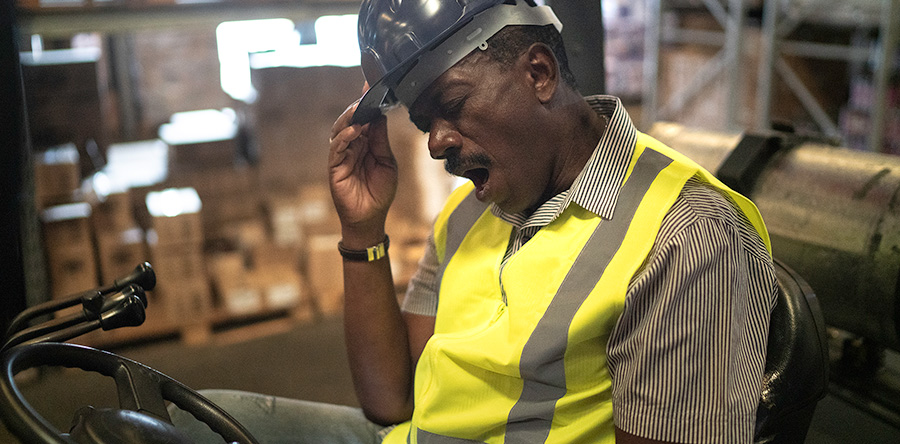Start off the new year by showing you care: Conduct a respectful workplace audit
The workplace significantly influences employees’ experiences; every interaction creates positive or negative emotions. If they have more negative...
3 min read
 Anne Cesak
:
September 11, 2024
Anne Cesak
:
September 11, 2024

Being your authentic self is becoming a familiar refrain as organizations have started recognizing the benefits of employees being able to be themselves at work. When the pressure of masking their identity to fit a certain image or standard is removed, employees can thrive as valued team members and contributors.
For employees to be authentic, however, organizations must be intentional regarding DEI (diversity, equity, and inclusion) and create a workplace that works for all. In great places to work, employees trust the people they work for, take pride in their work, and enjoy the people they work with.
This degree of trust drives the world's best workplaces to outperform their peers on every business metric that matters. Great Place To Work® research shows that diverse and inclusive workplaces realize:
Higher revenue growth
Greater readiness to innovate
Increased ability to recruit a diverse talent pool
Lower employee turnover
Commit to DEI: Steps for creating an inclusive workplace
To ensure we are creating workplaces that work for all, we must consider the individual needs of each employee regardless of who they are, where they work, or their level or role in the organization. Below are actions you can take to demonstrate your commitment to creating an equitable, diverse and inclusive workplace.
Initiate Genuine Conversations: Make it safe for employees to share their perspectives, concerns, and experiences regarding feelings of inclusion or exclusion. Talk openly about DEI, solicit input and be receptive to constructive feedback. Have regular, formal, and informal conversations, not just during awareness months, to demonstrate commitment.
Move from data to insight to action: Continuous listening and data collection and analysis are essential for measuring progress. Begin by understanding your organization's demographics and conducting comprehensive surveys focused on DEI to identify gaps. Share the results transparently, acknowledging areas where you are doing well and those that need improvement. Involve employees in the creation of action plans based on survey findings. Where possible, establish clear goals for managers and teams and encourage them to hold each other accountable for results.
Cultivate Inclusive Spaces for All Voices: Facilitate opportunities for employees with common interests or identities to work together and share their experiences. Demonstrate support for employee groups at the highest level and give them the time and resources to make an impact as strategic partners, sounding boards and resources.
Institutionalize Diversity and Inclusion as Core Values: Some organizations will say DEI is part of their DNA, part of who they are, and embedded in their values. For this to be true, it must be integral to the organizational culture, strategic plan and company policies, practices and programs. DEI must live at all levels of the organization. Teams and individuals should reflect on their choices and behaviors and assess whether their actions reflect a shared commitment to DEI.
Be Intentional about DEI to boost belonging
One of the outcomes of being intentional about DEI is belonging. Belonging in the workplace is an employee's sense that their uniqueness is accepted and even treasured by their organization and colleagues. It is an accumulation of day-to-day experiences that enable a person to feel safe and bring their whole, unique self to work.
When employees don't experience a sense of belonging, they are more likely to feel insecure about their place in the organization and feel uncomfortable being authentic. This insecurity and fear will eventually undermine performance, creativity and the ability and willingness to collaborate.
Great Place To Work research reveals that belonging can be fostered through several actions:
Avoid favouritism: Leaders should strive to treat all employees fairly and without bias. Avoid favouritism and ensure everyone feels respected and valued.
Involve employees in business decisions: When employees feel they have a say in how the business operates, they are more invested in its success and growth.
Communicate transparently: With access to the same information, employees can all be 'on the same page' and will not try to fill in the blanks with speculation.
Promote fairly: Create a fair and transparent promotion process, ensuring everyone has a clear career path and opportunities for advancement.
Celebrate accomplishments: Appreciate everyday work and recognize big and small achievements and milestones. Ensure this is done consistently across the organization.
Welcome new employees: A thoughtful onboarding process that includes introductions to colleagues, processes and critical information will help make new employees feel welcome and included from day one.
Embrace the whole person: Create psychologically and emotionally safe places and prioritize well-being through leader behaviours, organizational programs and practices.
[Read: Do your employees feel like they belong?]
Build trust and make it safe for employees to be their authentic selves
It is important to remember that human beings are mercurial; our moods and perspectives change regularly depending on what's going on in our lives, personally and at work. When you say you want employees to bring their authentic selves to work, you are asking them to take a risk. They need to trust that you are committed to DEI, and they won't be reprimanded or experience repercussions if they follow through. These steps will help you create a safe, inclusive and productive workplace where employees feel supported and trust they can be themselves daily.
Additional Resources
Belonging in the Workplace: What Does It Mean and Why Does It Matter? | Great Place To Work®
Racially Diverse Workplaces Have Largest Revenue Growth | Great Place To Work®
Why Diverse and Inclusive Teams Are the Engines of Innovation | Great Place To Work®
4 Key Steps for Authenticity and Inclusion | Great Place To Work® Canada
7 Drivers That Build Belonging in the Workplace | Great Place To Work®
Best Practices For Creating An Inclusive Workplace | Great Place To Work® Canada

The workplace significantly influences employees’ experiences; every interaction creates positive or negative emotions. If they have more negative...

Louise Bradley has dedicated her career to reducing stigma in mental health, building suicide prevention programs, improving workplace culture, and...

5 min read
When you hear the phrase workplace impairment, what comes to mind? If you are like most people, you likely think about substance use, such as...